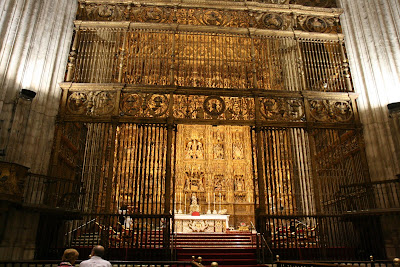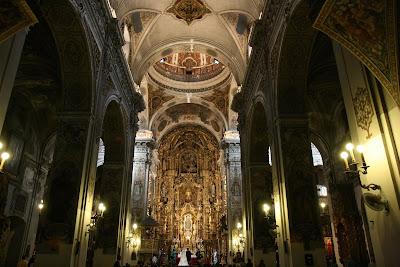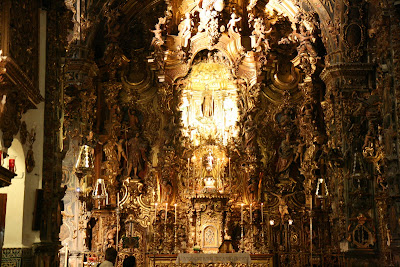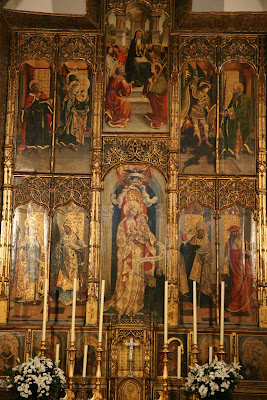
The parish of St. Mary’s Norwalk, like so many others, is pursuing a restoration of the original splendor of their church – particularly the sanctuary. Moreover, some churches of newer construction are recreating the beauty of tradition where it had never previously existed at all. A key feature of most such restorations is the construction of a splendid reredos or altarpiece behind the main altar. Let me share some recent images of altarpieces in Seville, Spain, as examples of what can be accomplished. We may lack the funds and even more so the artistic skill to even remotely approach these masterpieces. Yet it is by studying and imitating the classic masterpieces of the past that we lay the foundation for a revival of art now and in the future.

The great altarpiece, or Retablo Mayor, of Seville Cathedral. It was carved of wood between 1482 and 1526. In its golden splendor it sets the sanctuary apart as a sacred, heavenly space – much like the Russian iconostasis ( which, however, stands in front of the sanctuary).


Figures at the top of the altarpiece are actually larger than those at the bottom for reasons of perspective.

If a parish has determined upon a magnificent reredos, a rood screen is the natural next step. In Seville Cathedral, this splendid grille both provides the necessary separation of the sanctuary, so desired by Pugin, yet addresses the issue of lack of visibility raised by his critics.

A baroque example in the parish of Maria Magdalena.


An eighteenth century altarpiece from the chapel of St. Joseph. Spanish baroque art of this era was uniquely exuberant and intricate.




Another medieval example, in addition to the cathedral. Here, painted panels make up the altarpiece.
Related Articles
1 user responded in this post